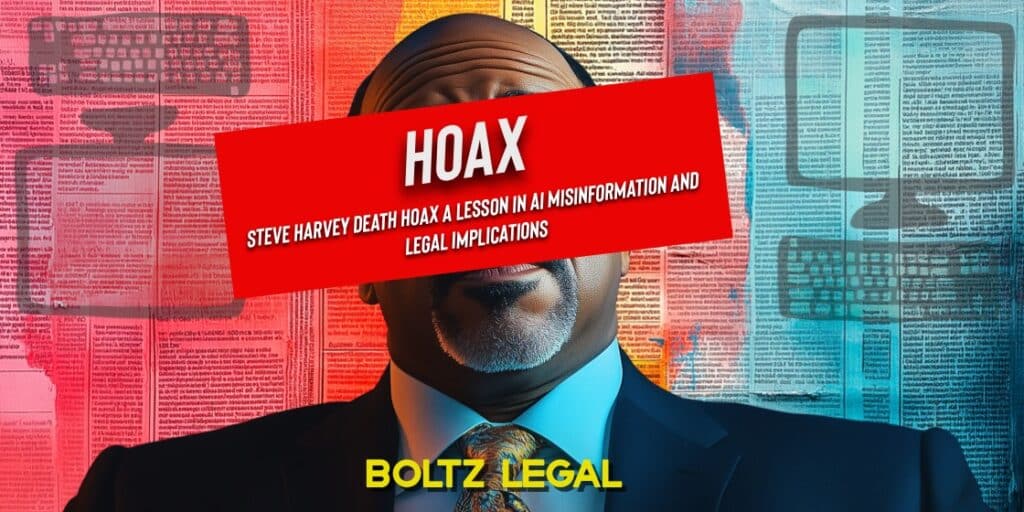A Lesson in AI Misinformation and Legal Implications
In December 2024, a false report claiming the death of comedian and television icon Steve Harvey circulated widely online. This hoax, the fourth of its kind targeting Harvey within a year, underscores the alarming rise of AI-generated misinformation and its potential to harm reputations, spread fear, and erode trust in online content.
The Incident: AI-Generated Misinformation
The fabricated report originated from a website called “Trend Cast News,” which publishes unverified content designed to manipulate search engine rankings. The story falsely claimed that Steve Harvey had passed away and was distributed through the NewsBreak app, a popular news aggregator. This AI-generated hoax was amplified by algorithms prioritizing engagement over accuracy, enabling the story to gain significant traction online.
Steve Harvey himself addressed similar hoaxes in the past, including a 2023 rumor, with humor and resilience. However, the repeated targeting of public figures with such hoaxes highlights deeper issues related to the ethics and accountability of AI technology.
Legal Implications of AI-Generated Hoaxes
The Steve Harvey death hoax is not merely a digital prank; it raises critical legal and ethical questions, including:
- Defamation Lawsuits: Spreading false information about someone’s death can be classified as defamation if it damages their reputation or causes emotional distress. Public figures like Harvey have legal recourse to address such false claims, although the standard for proving defamation is higher for celebrities.
- Platform Liability: News aggregators like the NewsBreak app may face scrutiny for amplifying unverified content. Their role in distributing misinformation could lead to calls for stricter content moderation policies or potential legal accountability.
- AI Accountability: With AI-generated content at the center of this incident, questions arise about the responsibility of AI developers, publishers, and users in preventing the misuse of such technology. Governments and legal systems may need to consider regulations to address these challenges.
The Human Cost of Misinformation
False death reports like this have real consequences for victims. Beyond personal distress, these hoaxes can affect professional opportunities, damage public trust, and perpetuate harmful narratives. For fans and followers, the rapid spread of fake news can lead to confusion and unnecessary alarm.
Combating Misinformation in the Digital Age
To address the growing issue of AI-generated misinformation, a multifaceted approach is required:
- Strengthening Defamation Laws: Updating legal frameworks to address the unique challenges posed by AI-generated content.
- Regulating AI: Governments should create guidelines for AI use, particularly in content creation and distribution.
- Platform Accountability: Social media and news aggregators must implement stricter content verification measures to reduce the spread of false information.
- Public Awareness: Educating users about media literacy and the importance of verifying sources before sharing content.
Key Takeaways for Legal Professionals
The rise of AI-generated misinformation is reshaping the legal landscape. Attorneys must stay informed about emerging technologies and their implications for defamation, intellectual property, and platform liability. Legal professionals can also play a pivotal role in advocating for policies that balance technological innovation with ethical responsibility.
Why This Matters
The Steve Harvey death hoax is a cautionary tale about the dangers of unregulated AI and the rapid dissemination of fake news. For individuals, businesses, and legal practitioners, it highlights the importance of vigilance, accountability, and ethical standards in the digital age.
Today’s Insight:
“Falsehood flies, and the truth comes limping after it.”

